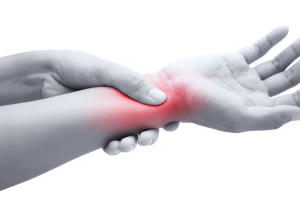by
Lauren Dubinsky, Senior Reporter | March 05, 2018

Working together to improve treatment
of carpal tunnel
Samsung NeuroLogica Corporation and Sonex Health announced a co-marketing agreement on Wednesday to promote the use of high-quality ultrasound imaging during micro-invasive procedures.
"High frequency ultrasound offers some specific advantages over X-ray, CT and MR imaging," Dr. Darryl Barnes, CEO and co-founder of Sonex Health, told HCB News. "[It] allows the surgeon the ability to see inside of the body in a dynamic way and in real time, while performing a procedure, without ionizing radiation exposure such as that associated with X-ray and CT imaging."
Sonex Health is the manufacturer of the SX-One MicroKnife. It performs carpal tunnel release (CTR) procedures via a micro-incision that is up to five times smaller than the incision made during conventional CTR surgeries. The incision is so small that it can be patched with an adhesive bandage or strip.



Ad Statistics
Times Displayed: 656
Times Visited: 5 Fast-moving cardiac structures have a big impact on imaging. Fujifilm’s SCENARIA View premium performance CT brings solutions to address motion in Coronary CTA while delivering unique dose saving and workflow increasing benefits.
Carpal tunnel syndrome affects over 12 million Americans and leads to 500,000 surgeries per year, according to a study published in the
Journal of Bone and Joint Surgery in 2016.
The SX-One MicroKnife’s MeerKat Technology improves the protection of nerves, blood vessels, tendons and other sensitive anatomy during the procedure. That results in faster pain relief and recovery.
A necessary component of this procedure is high-quality musculoskeletal ultrasound imaging. Ultrasound guidance allows the surgeon to visualize the surrounding critical anatomy in real time in order to avoid damaging it.
"High-frequency ultrasound will generate high resolution images, similar to MR images, within a clinic exam or procedure room, with a relatively small and inexpensive piece of equipment," said Barnes. "Using [this] to guide micro-invasive procedures is less intimidating to the surgeon and the patient by allowing visualization of critical anatomy while performing a procedure in a comfortable environment."

